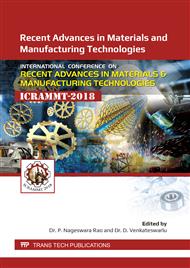p.321
p.327
p.335
p.343
p.349
p.355
p.361
p.367
p.373
Critical Review of Design Procedures for Reinforced Concrete Slabs as per IRC 112-2011
Abstract:
Nowadays finite element software is used for the design and analysis of reinforced concrete slabs. This paper intends to have a critical review based on a comparison study between the three design methods and to estimate the amount of reinforcement to be provided in each case. The three methods discussed are; the three-layer sandwich model (IRC 112-2011), Wood Armer method (EN1992-1-1:2004) and the conventional design method as per IS 456-2000. In the recently revised code for bridges IRC 112-2011, there is a recommendation to adopt three-layer sandwich model for the design of reinforced concrete slab. In this paper, a critical review of this method is done, and it is used for slabs subjected to uniformly distributed load. This method is illustrated by considering the design of rectangular slab subjected to uniformly distributed load. The results of this method are compared with the results obtained using Wood Armer method and using the moment coefficients suggested in IS 456-2000.
Info:
Periodical:
Pages:
349-354
Citation:
Online since:
August 2019
Authors:
Keywords:
Price:
Сopyright:
© 2019 Trans Tech Publications Ltd. All Rights Reserved
Share:
Citation:


